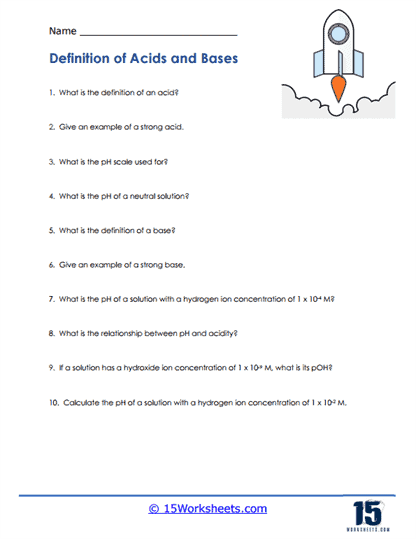Definition of Acids and Bases

Worksheet Description
This worksheet assesses foundational knowledge about acids, bases, pH, and pOH. To successfully complete it, students need to recall definitions, understand the importance of the pH scale, and be able to perform basic acid-base calculations.
Before attempting the worksheet, students should review the definitions and concepts related to acids, bases, pH, and pOH.
For certain questions, like examples of strong acids/bases, reference materials like textbooks or notes may be helpful.
Acids are substances that can donate protons (H+ ions) to other substances, while bases are substances that can accept protons. The specific definitions of acids and bases can vary depending on the context (e.g., Arrhenius, Bronsted-Lowry, Lewis definitions).
It is a logarithmic scale used to measure the acidity or basicity of a solution. The scale typically ranges from 0 (strongly acidic) to 14 (strongly basic), with 7 being neutral.
Analogous to pH, pOH measures the basicity of a solution based on hydroxide ion concentration. pH and pOH are related such that pH + pOH = 14 at 25°C.
The students are expected to:
Define acids and bases.
Provide examples of strong acids and bases.
Understand and describe the purpose and use of the pH scale.
Relate pH and pOH to the concentration of hydrogen and hydroxide ions.
Perform basic calculations related to pH and pOH.
